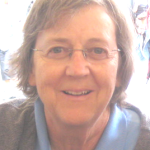 COMING BACK FROM MY MORNING WALK, I heard an unusual call above me. Looking up there was the beautiful pattern of . . . Canada geese, or was it snow geese? I couldn’t tell, but the call wasn’t the usual honk of Canada geese. It was more of a two-note call. For a moment I thought the flock might be white egrets, but finding silhouettes of them in flight, I could tell it wasn’t them. So I don’t know what the flock was. What I do know is that the birds and other wild creatures are in trouble, as annually reported by such publications as the Smithsonian’s “State of the Birds 2014.”
COMING BACK FROM MY MORNING WALK, I heard an unusual call above me. Looking up there was the beautiful pattern of . . . Canada geese, or was it snow geese? I couldn’t tell, but the call wasn’t the usual honk of Canada geese. It was more of a two-note call. For a moment I thought the flock might be white egrets, but finding silhouettes of them in flight, I could tell it wasn’t them. So I don’t know what the flock was. What I do know is that the birds and other wild creatures are in trouble, as annually reported by such publications as the Smithsonian’s “State of the Birds 2014.”
Since we are only a week from Christmas, I am happy to report that on my Christmas list is a request for a new bird feeder. I’m very confident that I will be able to add it to my current inventory of four seed feeders.
Meanwhile, this past Monday, the Napa-Solano Audubon Society will have taken the 68th annual Benicia Christmas Bird Count. (By the way, the 2012 Christmas count spotted two snow geese.) The extensive species list for the Benicia circle that is counted includes the greater white-fronted goose, snow goose, Ross’ goose, Canada goose, mute swan and tundra swan. Last year the birders counted 131 tundra swans. How wonderful!
The highest number of species spotted were in grasslands (37.78 percent), the next highest in residential (27.55) and the third highest in riparian areas (23.52). The bird count provides a wealth of information and we, as a community, are so lucky to have it happen here. Thank you Napa-Solano Audubon Society members and volunteer counters!
What’s for lunch?
If you want to keep bird feeding simple, black sunflower seeds provide nutrients appropriate for many birds. My sister, Roberta, had a special shed filled with metal garbage cans filled with sunflower seeds, cracked corn, thistle seed and millet. Her house was above a Minnesota nature preserve so the cracked corn was much appreciated by pheasants, ducks, turkeys and such. I don’t find cracked corn necessary where I live. While I haven’t been putting fruit out for the birds, I’m thinking about it now, especially since my cotoneaster bushes have very tiny berries this year. I didn’t water my hillside this past summer and the fruit has definitely suffered.
Feederwatch.org mentions that cedar waxwings love fruit of all sorts, so I’m thinking of putting out some grapes and slicing some of my oranges for them when they migrate through Benicia sometime in January or February. However, we must make sure to remove any fruit that is moldy because “some molds create toxins that are harmful.” That is good to know!
There is a Steller’s jay in the neighborhood who gets a treat of unsalted peanuts from my neighbor, Rich. The jay is so tame that he will alight on Rich’s hand for a treat. As I know this jay, he flies the three blocks down the hill to my yard on occasion. Every now and then I’ll find the shells of his prize in the yard. Jays are able to shell peanuts, but smaller birds need to have unshelled (and unsalted) peanuts.
On the Feederwatch website is a link to Cornell University’s Lab of Ornithology and Bird Studies Canada’s “Project Feeder Watch.” I’ve heard about this project via NPR’s “Science Friday.” The link to the website is below. Once you create an account, it appears that you can participate in the “winter-long survey of birds that visit feeders at backyards, nature centers, community areas, and other locales in North America.” There is a slight fee for participating ($18) but as a participant you are sent a research kit with instructions and a bird identification poster.
As we approach Christmas and the New Year, it is worth remembering to care for all wild creatures, and especially the birds.
Learn more
• feederwatch.org/about/project-overview/
• feederwatch.org/learn/feeding-birds/
• napasolanoaudubon.com/Monitoring/BeniciaCBC
• Stateofthebirds.org
Constance Beutel is the chair of Benicia’s Community Sustainability Commission. She is a university professor and videographer and holds a doctorate from the University of San Francisco.






So lets not put up any power generating windmills in Benicia. They are big bird killers. Here we are on the Pacific Flyway in addition to the owls, raptors etc we host. Lets just buy our wind power from the windmills over in Marin County.